How to create a one-page website (landing page): effective approaches and tips
The goal of any website should be to grab the attention of the person who comes to it. This is why it is extremely important to know how to create a landing page. This article will give you tips on creating landing pages. You will learn about the main blocks of a landing page, as well as the importance of measuring conversion rates.
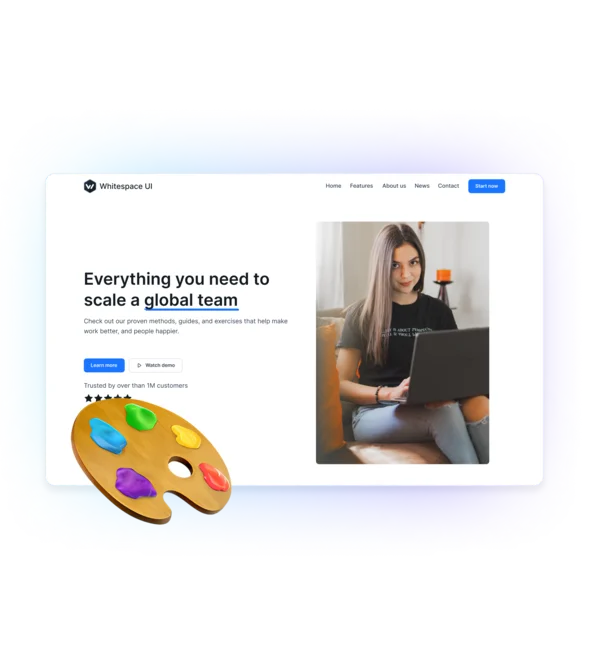


What is a landing page
Landing page is the first page that users arrive on after entering a site. However, it should not be confused with the home page: the landing page, in fact, is a section created specifically to channel users arriving from Google, a social network, or email marketing campaigns and must, therefore, be well-structured to capture attention and get maximum conversions.
You can attract people to your landing page in several ways:
- Using a paid marketing campaign (AdWords, email marketing, Facebook advertising)
- Page optimization for search engines. In this case, you will first need to find keywords that best express your content and appeal to your target group.
Landing pages essentially serve two purposes:
They drive traffic to your site because they are structured to be indexed by Google and therefore appear in search engine results.

They encourage visitors to take action, be it signing up for a newsletter, purchasing products or services, and so on.



What are the main advantages of landing page
Creating a landing page is the best strategic tool for directing customers to products and services because it is targeted, simple, optimized for a few specific keywords, and presents a clear call to action, meaning one call to action.
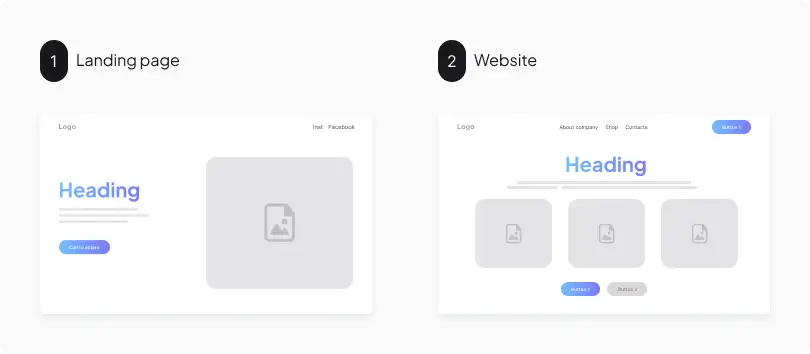
So we can identify some of the benefits that landing pages can offer:
- Increase conversion
- Landing pages are designed to direct users to a specific action, such as purchasing a product or signing up for a newsletter. With focused design and a lack of distracting elements, landing pages tend to have higher conversion rates than traditional web pages.
- Audience segmentation
- Through segmentation, building a landing page allows you to offer personalized and targeted experiences that meet user needs and preferences.
- Collection of information about clients
- Landing pages are a great tool for collecting visitor information such as demographic, behavioral, and contact data. This information can be used to improve marketing strategies, develop new products or services, and build stronger relationships with customers.
- Testing and optimization
- Landing pages allow you to easily test different content, designs, and offers to determine which elements perform best and optimize the performance of your marketing campaigns.
- Ease of implementation
- You can create landing pages quickly with user-friendly platforms and design tools. This allows you to flexibly respond to market needs, launch new offers or promotions, and adapt marketing strategies in real time.


How to design and create a perfect landing page
To create a landing page requires a practical and targeted approach. Follow these key steps for designing a successful landing page:
Clearly identify your audience
Customize your landing page based on the interests and preferences of your target audience. Adjust the language, design, and layout elements according to the age and habits of your users.
Define objectives
Before building landing pages, understand what you want to achieve with your landing page, whether it’s generating clicks from a campaign, increasing subscribers, promoting a product, or other goals. Objectives must be clear and concrete.
Structure according to objectives
Adapt the layout of your landing page based on specific objectives. A page aimed at generating webinar registrations will have a different structure than one promoting a new product.
Optimize visual appearance
Consider the visual aspect in relation to your audience. For example, if your target is older individuals, use a larger font and position calls to action clearly. For millennials, ensure the page is optimized for mobile navigation.
Focus on key elements
Keep your landing page concise and concentrate on a few crucial elements. Too many details can be distracting. Ensure each element contributes to achieving the objectives.
Maintain consistency and clarity
Ensure every element of your landing page contributes cohesively to the overall message. Clarity is essential to maintaining visitor attention.
Measure and optimize continuously
There is no perfect landing page. Monitor conversion metrics and make constant improvements. Perfection is achieved through iteration and continuous optimization.

Increase visibility
for your business: SEO solution for growth!


How to create a landing page using a website builder
To build landing page using a website builder follow the steps:
- Select a website builder like Wix, Squarespace, or WordPress.
- Create an account and choose a template tailored for landing pages.
- Replace placeholder content with your own brand elements.
- Craft compelling content.
- Place a prominent call-to-action button.
- Ensure your page is mobile-friendly.
- Add contact or opt-in forms if needed.
- Connect analytics tools for insights.
- Optimize for search engines with relevant keywords.
- Check the page’s appearance and functionality.
- Publish your landing page, and consider connecting a custom domain.
- Share your page on social media and through marketing channels.
- Analyze performance and make improvements based on user behavior.


What blocks should be added to the landing page
Landing is an individual product, formed depending on the field of activity. Despite the uniqueness of each landing page, utilizing a land page builder, there are required blocks that ensure effective promotion:
Main screen
A visually attractive block containing a bright title and a brief description of your offer. Visual appeal and clear text on the home screen are critical to keeping the visitor’s attention.

Advantages
Explaining the unique features of your product or service. Highlight the main benefits that may interest the visitor, based on his needs.

About company
Brief information about your company, its values and experience. This block helps establish trust and convince the visitor of your expertise.
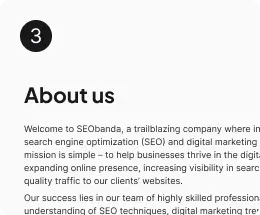
Stages of work
A detailed description of the steps or process a visitor will go through when taking advantage of your offer. This gives a clear idea of what to expect.

Call to Action (CTA)
A clearly highlighted element that directs the visitor to the next stage of interaction with your product or service. Clearly formulated and motivating CTA keys for conversion.

Reviews
Positive customer reviews highlighting the reliability and quality of your offering. This block creates trust and convinces the visitor of the successful experience of other users.
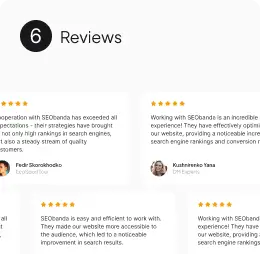
Contacts
Information for contacting your company. Provide easy access to contacts so potential clients can ask questions or request additional information.
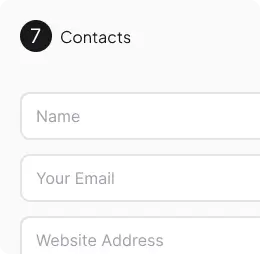
The effectiveness of a landing page depends on a careful balance between visual attraction, informational completeness, and the motivation of the visitor to action. Landing page creation plays a pivotal role in achieving this equilibrium, as it involves strategic decisions regarding design, content, and user experience.


How to evaluate and measure landing page performance
To measure the effectiveness of a landing page, we first look at its conversion rate, which is the percentage of unique visitors who take the advertiser’s desired action. To get a good CR, experts recommend taking care of some parameters, both on a technical and content level, for example, making the landing page compatible for all platforms (reducing the use of heavy technologies such as Java or Flash), inserting clear and unique activities, use compelling copy and promote special offers.


Conclusion
In this article you have been learning how to make a landing page to enhance your online presence and engage with potential customers effectively. Mastering the art of creating a compelling landing page is crucial for any website’s success. Creating a landing page involves attracting visitors through various channels, utilizing paid marketing campaigns or optimizing for search engines. The advantages of landing pages include increased conversion rates, personalized audience experiences, and efficient information collection for strategic marketing.
The effectiveness of a landing page hinges on a careful balance between visual appeal, information completeness, and motivating visitors to take action. Continuous evaluation and improvement are vital for sustained effectiveness in the dynamic online landscape. To measure performance, focus on the conversion rate and optimize technical and content aspects for an impactful and successful landing page.
You may also like it

Brand identity: The key to brand recognition and SEO success
Every product has its own unique feature that sets it apart from other brands. It could be a special font, a unique mascot, or an interesting logo with the right...

What is a dynamic URL and its impact on SEO
A dynamic URL (Uniform Resource Locator) is a web address that changes depending on the user's request or specific parameters. It differs from a static
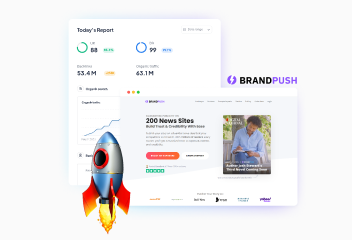
Press releases as an important part of your SEO strategy: Brand Push Services
SEO is the best promotion on the Internet that helps attract more potential clients and improve your market position. The use of press releases is an important SEO...












